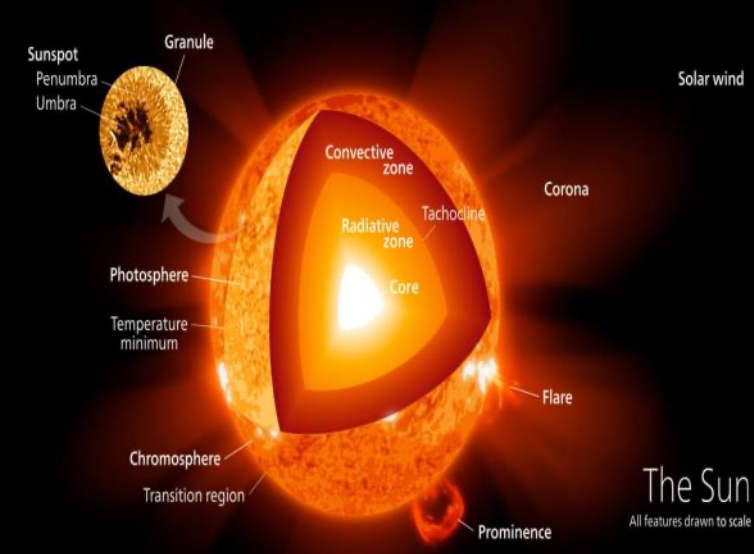May 27: The temperatures within the photosphere (innermost region) of the sun is around 6000 degrees Celsius, whereas the temperature within the corona region (outermost region) is around 500000 degrees Celsius, which is 1000 times hotter than its inner surface.
An international team of scientists from different research institutions used an instrument called the Interferometric Bio dimensional spectropolarimeter to form detailed observations and measurements of the sun to answer the above theory. This instrument is installed at the Dunn telescope in the US state of New Mexico. The scientists used the instrument to verify the existence of Alfvén waves in solar magnetic flux tubes which explains the higher temperature at the outermost region of the sun.
Now let’s see what Alfvén waves are and how it explains the coronal heating. The sun is made almost entirely of plasma. Plasma is a highly ionized gas that carries an electrical charge. The layers of the sun are divided into inner and outer layers. The inner layers are the core, radiative zone and convection zone. The outer layers are the photosphere, chromosphere, the transition region and the corona.
When the plasma moves through the convection zone, it produces huge electrical currents and creates strong magnetic fields. The magnetic fields are pulled up from the sun’s interior by convection. These show up on the surface as clusters known as dark sun spots. Dark sun spots can form different magnetic structures in the solar atmosphere.
Swedish scientist Hannes Alfvén had proposed an explanation in 1942 about the spike in temperature in the corona despite the distance from the sun’s main energy source.
He explained that the movement of plasma in a constant magnetic field produces a kind of combined electromagnetic-hydro-dynamic waves which are named after him as Alfvén waves. These waves can carry huge amounts of electric energy along the magnetic field of the sun from the innermost layer to the outermost surface of the sun (the corona). The heat travels along solar magnetic flux tubes before bursting on the outermost surface producing higher temperatures on the corona.


